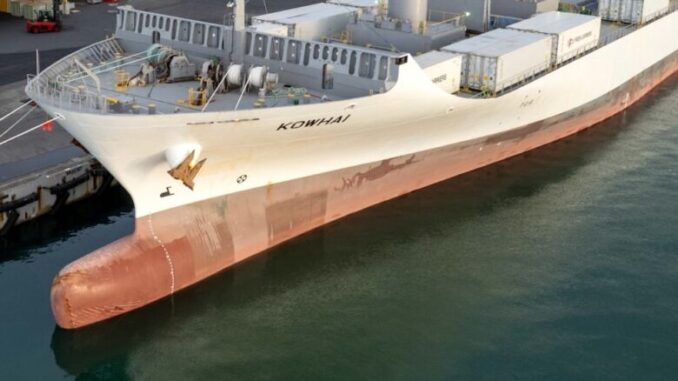
Kiwifruit marketer Zespri and its shipping partner ANL, CMA CGM’s Australian subsidiary, have launched a feasibility study into the possibility of a low-emissions corridor between New Zealand and Belgium.
A feasibility study was launched earlier this week which will look into setting up a low-emissions shipping corridor between Tauranga and Zeebrugge via the Panama Canal.
Shipping is a critical part of New Zealand’s export-driven economy, carrying 99% of the country’s trade by volume and around 80% by value.
Kiwifruit is a low-carbon product but shipping emissions make up a large portion of the product’s overall carbon footprint at 43% and this low-emissions corridor would address this issue.
“Like many exporters, Zespri can’t directly reduce shipping emissions ourselves so we’re working with our shipping and distribution partners to improve efficiency and find opportunities to pilot low-emissions fuels solutions as we work towards our ambition of being carbon positive by 2035,” said Rachel Depree, Zespri’s executive officer for sustainability.
According to Depree, this includes advocating for new port infrastructure and supporting the introduction of more low-emissions shipping vessels, fuels and technology – all significant investments.
A study by Ernst & Young for this very purpose claimed that European ports are already making large investments to accept alternative fuel ships which are larger than conventional vessels and some are already running on 100% renewable energy.
They see the collaboration with other New Zealand exporters and across the supply chain as critical to show demand, reduce cost, and speed up investment with shipping providers offering solutions for the most cost-effective ways to transition to lower-emissions fuels.
However, EY claimed that fuel storage requirements for low-emissions fuels will be a challenge as those fuels are less energy-dense and require a lot more space, meaning larger vessels and larger, deeper berths. Also, there is no clear preferred low-emissions fuel so an adaptive and multi-fuel approach is needed.
Fuel cost is an issue as well. Alternative fuels are not expected to price-match fossil fuels before 2040. From then on renewable electricity costs are set to go down and subsidies on fossil fuel and carbon taxes will be removed.
Take the Survey at https://survey.energynewsbeat.com/






